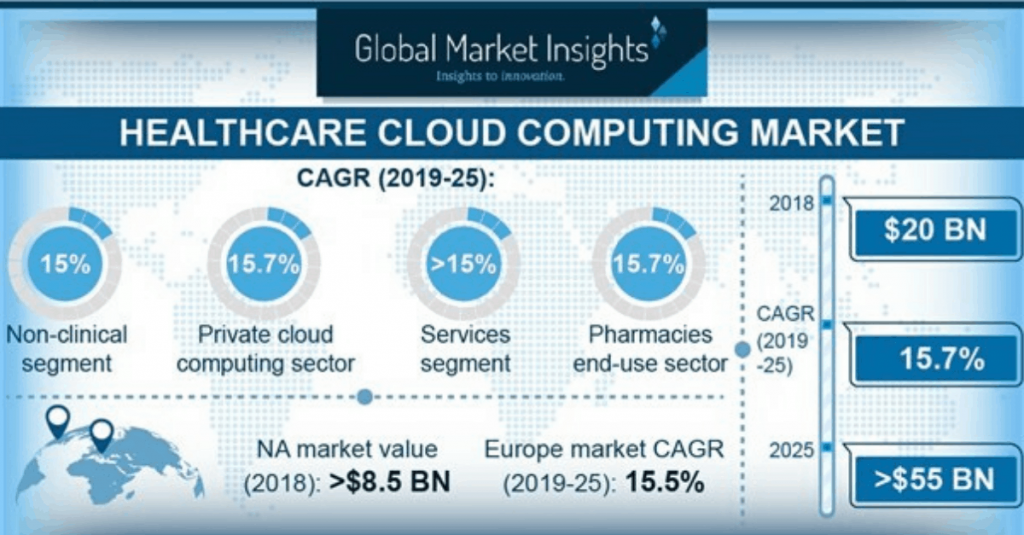Perhaps nowhere in life do we throw out more data than in the management of our health. Every interaction within a healthcare setting offers up more data than we can conceivably capture.
Until recently, however, healthcare data has been hard to collect and even harder to retrieve. Despite ongoing improvements, electronic health records (EHR) remain highly fragmented. Tightly regulated under HIPAA, personal health information (PHI) isn’t easily shareable—and the available data is often incomplete and poorly organized.
Strengthening Healthcare Data Management
Despite the rise in wearables (think Google’s recent $2.1 billion acquisition of Fitbit) and the increasing use of technology in healthcare settings, massive volumes of health data are still not being harnessed—from real-time tracking of medical device consumption to ‘in the wild’ indicators such as sleep patterns and stress levels.
Few deny that better capturing and analyzing healthcare data will allow for smarter interventions and real-time adjustments to healthcare treatment programs. The question remains how to scale such initiatives in ways that prove effective while preserving reasonable expectations around privacy.
The cloud has a defined role to play in this transition. Historically, however, healthcare networks have shown reluctance toward cloud adoption: the security of having their data on-premise exerts a strong appeal. But the explosive growth in data generation and the development of new AI tools that promise to drive operational efficiencies while yielding rich insights into patient treatments have dangled a tantalizing carrot in front of healthcare CIOs.
For many, the ability to store and access an endless supply of data, including medical images, is not only attractive but essential. “The volume of data that we store and make available today is far beyond even the wildest dreams of a few years ago—and it’s still growing,” says Kevin Muha, director of storage and data protection at University of Pittsburgh Medical Center (UPMC), discussing his team’s storage deployment with IBM.
“Unless the tens of thousands of employees across UPMC can lay their hands on the data as and when they need it, innovations won’t have the hoped-for impact on patients,” he continues.
Put another way, traditional NAS and file servers no longer cut it in these data-intensive, latency-averse environments.
The Impact of Advanced Technology Solutions
The promise of artificial intelligence is a central driver in the move away from traditional storage architectures for healthcare data.
Companies such as Zebra Medical Vision are built around advanced storage technologies that enable the rapid transmission and analysis of medical images, from CT scans to X-rays. The unlocking of flash storage through NVMe-oF technology is a critical component in executing such workloads.
For its part, cloud giant Google sees a massive opportunity for applying its deep expertise around search to the healthcare industry. It has signed a wave of healthcare partnerships designed to modernize IT infrastructure and support the data management needs of large healthcare organizations by priming the data for fast, intelligent retrieval. Electronic health records (EHR) should be more intuitively searchable, thinks David Feinberg, recently appointed head of Google Health.
Microsoft is similarly in on the act, looking to prise actionable patient-centered insights from deep troves of otherwise fragmented data. The hope is that the accumulation of massive health data sets, such as the oncology database jointly overseen by the Department of Veterans Affairs and IBM Watson, will facilitate medical breakthroughs and the delivery of more personalized medicines for a range of conditions.
Against this backdrop, there are repeated calls for the modernization of privacy protections under HIPAA to account for the deep advances in technology that have taken place since the flagship legislation was signed into law in 1996.
The Maturing Market for Cloud Healthcare
It’s never a bad idea to follow the money. Sure enough, healthcare dollars are flowing into the cloud data center, with no sign of easing up.
According to research from Global Market Insights, the global market for cloud computing in healthcare is earmarked to hit USD 55 billion by 2025, up from USD 20 billion in 2018. A sizeable slice of this expenditure will fund programs based on artificial intelligence. A 2018 survey of healthcare decision makers by Intel found the majority of respondents (54%) expected ““widespread adoption of AI within the next five years.”

The deluge of data generated daily as healthcare shifts into the virtual world is driving much of this growth in spending. Take the proliferation of mobile health apps that have added to the data frenzy of recent years. Some of these apps focus on general wellness indicators—sleep tracking or heart rate monitoring, for example—whereas others target the management of a defined healthcare condition, such as type 1 diabetes ,or a specific demographic, such as armed service personnel returning to civilian life. In either scenario, they are throwing out data with a similar intensity to an autonomous vehicle.
Setting a Strategy for Healthcare Data Management
By any measure, the healthcare CIO has a job to do. From managing the security of mobile apps to navigating the shifting sands of storage architecture, it’s a fine balancing act between digital transformation and operational reality.
Complicating matters, much of the raw data that may ultimately prove useful is generated at the edge—whether through mobile apps that store data locally or in remote locations where direct connectivity to the cloud is not assured. The volume of data generated is truly staggering, and will only grow. One approach to temper the flow of data from edge to cloud is to have initial data processing occur at the edge location, uploading salient data points only to the cloud at predetermined intervals.
There’s also the challenge of enabling real-time file access among authorized stakeholders in the supply chain. This includes the provisioning of secure edge-to-cloud file services. Not to mention persistent concern over data security and the need to safeguard patient information against the threat of ransomware attacks or hackers changing medical records. The healthcare CIO certainly has a busy plate.
Keeping Healthcare Data Secure
Nor is it only about securing the data on live storage media through such tools as encryption and cloud-based authentication. Ensuring safe disposal of end-of-life storage assets is critical too.
Healthcare organizations should work hard to reuse and remarket retiring hard disk drives (HDDs) and solid state drives (SSDs). In the right hands, there is no reason for storage drives containing confidential information to go missing in transit or for key checks in the data sanitization workflow to get overlooked.
In any scenario, and as healthcare data and workloads continue their migration to the cloud, it’s important for organizations to build cultures that prioritize security and don’t simply assume that information security is IT’s job or that an algorithm will somehow take care of matters.
Whether you’re a digital health startup pushing into uncharted territory or you’re a nationwide healthcare organization seeking to modernize IT infrastructure, the strategic management of your healthcare data and the storage architecture that underpins it will have an outsize influence on your success.
Read more about the balancing act that companies face every day around data retention and get in touch with Horizon for expert advice on your data center hardware needs.











